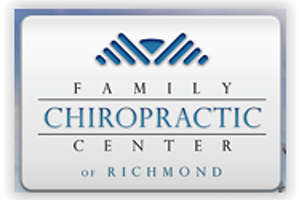Back Pain Causes
- Dr. Eric Carlsen
- Apr 12, 2022
- 2 min read

Among all the different areas of back pain—neck pain, upper back pain, lower back pain, and tailbone pain—there’s a host of conditions that can bring it on.
There are several diseases, disorders, and illnesses that can cause back pain. They fall into a few broad categories.
Structural Issues
Structural issues are, collectively, a top cause of back pain. We can define structural issues as any condition that affects the spinal column itself or any part. This includes a pretty diverse array of structures and tissues, including:
The vertebrae
The intervertebral discs
The spinal canal
Conditions that can be considered structural issues include:
Spinal Stenosis: when the spinal canal narrows, usually due to a herniated disc but sometimes caused by bone spurs from osteoarthritis or by injury; the structure causing the narrowing frequently compresses a nerve root or the spinal cord itself (myelopathy).
Herniated Disc: when the pads between vertebrae move out of position and press on the nerves. Herniated discs are more common in the lumbar and cervical spine, but can sometimes occur in the thoracic spine as well.
Arthritis: characterized by swelling and tenderness, back pain can be caused by different types of arthritis, including ankylosing spondylitis, spondylosis (spinal osteoarthritis and the most common form of arthritis by far), and rheumatoid arthritis.
Degenerative Disc Disease (DDD): a condition tied to aging that causes discs to break down.
Sciatica: compressed nerve pain in the buttocks, usually from a herniated disc.
Compression and Wedge Fractures: a vertebral body, almost always due to weak bones from osteoporosis, collapses under the weight of the spinal column.
Pregnancy: 50 to 80% of pregnant women experience back pain.
Scoliosis: abnormal curvature of the spine that is also frequently diagnosed in childhood.
Kyphosis: abnormal curvature that causes a hunchback or slouching posture.
Flatback Syndrome: when the lower spine doesn’t reflect normal curvature.
Lordosis: abnormal curvature that causes swayback.
Spondylolisthesis: when one vertebra slips forward over the vertebra below it.
Osteoporosis and its precursor, osteopenia: These conditions, largely age-related, don’t cause back pain per se, but they do put you at a much greater risk of vertebral compression fractures.
Discogenic Low Back Pain: one or more intervertebral discs of the low back cause pain.
Pinched Nerves: when too much pressure is applied to a nerve.
Lumbar Radiculopathy: pain in the lower extremities stemming from nerve compression in the lower back.
Cauda Equina Syndrome: a consequence of a long-term nerve condition in the lumbar spine that can affect bowel and bladder function and even lead to paralysis. Cauda equina syndrome is a medical emergency.
Sprains and Strains
Many experts believe that sprains and strains are the most common cause of back pain, especially acute episodes that resolve by themselves. Strains are injuries to the muscle or the tendon that connects it to the bone, while sprains are injuries to ligaments, which connect bones to each other.
Other conditions in this category can include:
Cervical Sports Injuries: also called a “stinger,” these injuries occur when the head or neck is hit to one side.
Whiplash: neck sprain or strain from hyperextension and hyperflexion.
Written by Reginald Q. Knight, MD, MHA and Shelby Deering; Reviewed by Reginald Q. Knight, MD, MHA




Comments